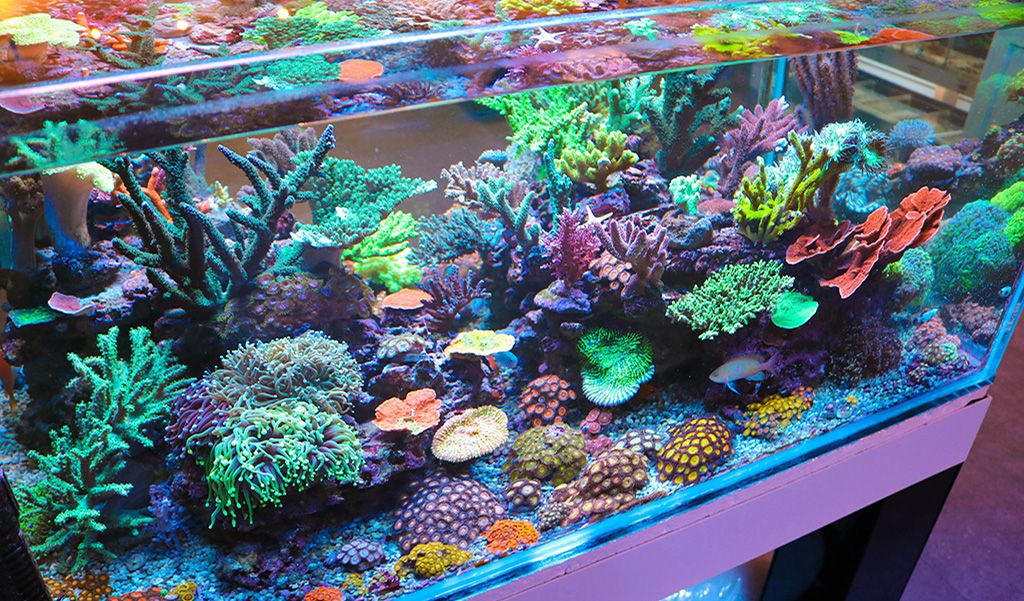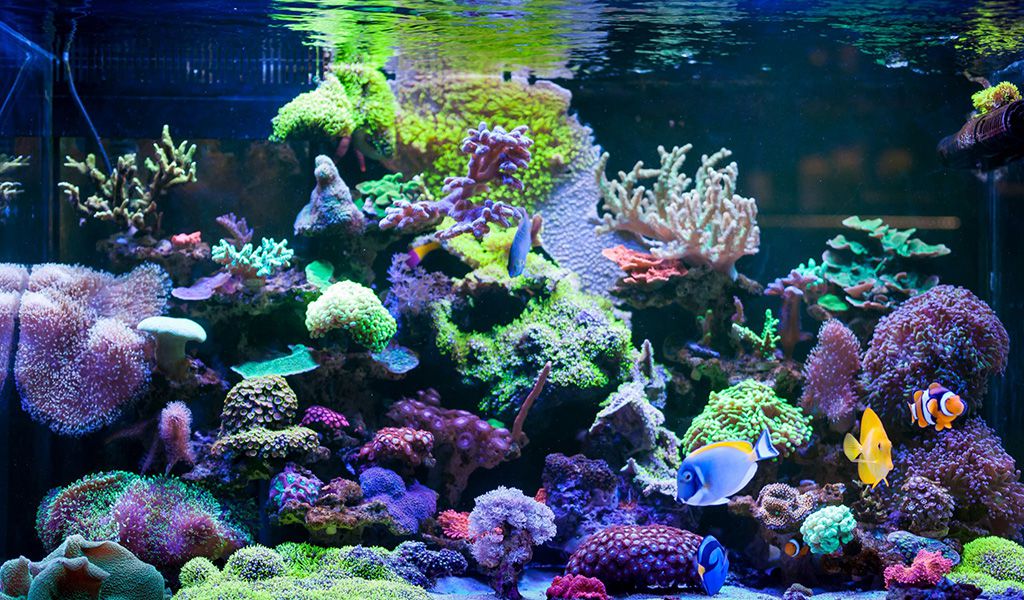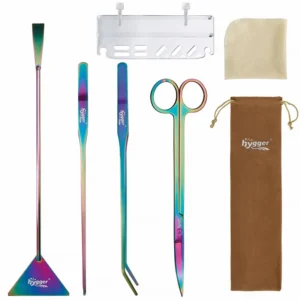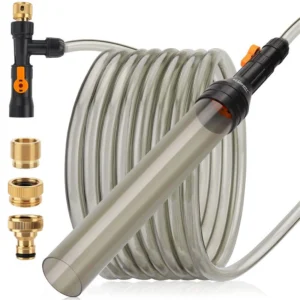Alkalinity level, one of the water parameters, is crucial in reef tanks. It would affect the pH level, coral skeleton formation, and other marine organisms’ growth. Therefore, it is vital to keep an ideal alkalinity level in your reef tank. In today’s article, let’s learn the ideal alkalinity level and how to maintain it in reef tanks.
Content Table
What Are the Effects of Acidification in a Reef Tank?
Usually, corals in your reef tank would consume the alkalinity. A disproportionate addition of calcium also lowers the alkalinity level in the water. Consequently, acidification in reef tanks would sometimes occur. Also, changing water with high calcium is one cause of the declined alkalinity level. Then, what will happen when facing acidification in your reef tank? Acidification in a reef tank would hinder the coral skeleton formation process. Moreover, the fish’s bodies may be corroded. Additionally, acidification in a reef tank may cause acid poisoning for fish. Fish would face breathing problems, disease, or even death.
What Causes Alkaline Levels to Be High
Proper alkalinity level avoids pH fluctuation, coral bleaching, coral tissue loss, and alkalinity burns. Usually, the higher the alkalinity level, the greater the ability to prevent pH level fluctuation. Furthermore, alkalinity is essential for corals’ calcification and marine organisms’ skeletal formation. Also, it provides carbonate and bicarbonate for corals to build skeletons.

The higher, the better. It is not absolute. A too-high alkaline level may lead to a high pH level. And limestone would form on the aquarium glass, inside the pumps and heater, and on other surfaces. Exactly, it is damaging to aquarium equipment and the water flow would slow down. As a result, you should ensure that the alkaline level is within the ideal range.
But what would lead to excessive alkaline levels? Low calcium levels may be one reason. You can deal with it by increasing your calcium levels. Besides, high alkaline levels may be the result of a sharp decline in nitrate levels. You can simply solve the problem by feeding fish more or adding more fish. However, overfeeding and overstocking should be avoided.
The Ideal Alkalinity Level
In the first place, you should know what is alkalinity. It is something to buffer acids in the water and keep an ideal pH level. The alkalinity level is a measurement of alkaline substances in the water, like carbonate, bicarbonate, and hydroxide. Generally, the mg/l (milligrams per liter) and ppm (parts per million) are the units of alkalinity. However, in the aquarium industry, alkalinity level is usually measured in degrees of carbonate hardness (dKH/ºKH). And 1 dKH equals 17.9 mg/l or 17.9 ppm.
The ideal alkalinity level in a reef tank should be 8-12 dKH or 143-215 ppm. Also, to maintain a healthy reef tank, it is recommended to test the alkalinity once or twice each week. The effective way to do that is by using the water test kit. It is convenient and easy to program. Just dip one touch test strip into the aquarium for 2 seconds, then wait for 30 seconds, finally, you can read the result by comparing the colors of the pads to the color chart.
Maintain Alkalinity Reef Tank
As we have mentioned, alkalinity is critically important for a reef tank. To keep healthy corals and organisms in your reef tank, maintaining an ideal and stable alkalinity level is crucial. In this segment, we will share some ways to maintain an ideal alkalinity level in reef tanks.
Monitor the water regularly
Monitoring the water regularly should be in the first place. Facing decreased alkalinity levels, you can add baking soda (sodium bicarbonate), lime water, or other solutions. Take baking soda as an example, you should follow “10 gallons of water for 1 teaspoon of baking soda”. Moreover, it is feasible to do water changes and add some salt mixes with a higher dKH. Besides that, adding more seashells as a substrate is another alternative. Because seashells can release calcium and magnesium. Usually, you can add two pounds of seashells for every ten gallons of water.
On the other side, what can you do if the alkalinity level is too high? Actually, it is useful to change the water and add some salt mixes with a lower dKH. Additionally, adding vinegar is an excellent option. Commonly, 1 ml of vinegar per gallon of water is great.

Doing water changes
To some extent, changing the water is helpful to manage the alkalinity level in the reef tank. Also, changing the water can replenish major elements and trace elements. By the way, it is best to clean the aquarium and change the water twice each month. Your reef aquarium is too large? Come on, just take it easy. An aquarium siphon can make the water change process easier and more convenient. But that is not all advantages. Excluding water changes, an aquarium gravel cleaner also plays a role in keeping the aquarium clean. It helps to suck away the feces and clean every corner of a fish tank.
Adding an aquarium wavemaker pump
Furthermore, adding wave makers can give you a hand. It can create water movement, improve water circulation, and increase the oxygen level, which is beneficial to the growth and health of aquatic pets. Also, water movement ensures thorough agitation and a balanced alkalinity level of the water. For large aquariums, a double-head wavemaker is a better alternative.
Final Words
Subjectively speaking, keeping a reef tank is harder than a freshwater aquarium. The same goes for other water parameters, the alkalinity level changes are not visible. On the contrary, only testing the water could make the alkalinity level changes obvious. A nano reef tank, for instance, needs more care than a normal fish tank. For more additional information about nano reef tank building, like aquarium supplies for a nano reef tank, steps for setting up one, and ways to maintain it, you can go to Aquarium Supplies for Nano Reef Tank.
For more other remedies to maintain an ideal alkalinity level in a reef tank, welcome to share with us in the comment. That is all for today. Finally, thanks for your reading.



Hi! Is 1.022 alkalinity too low for 50 gallons reef aquarium?
Hi, the ideal specific alkalinity range for reef aquarium is 1.022 to 1.028.